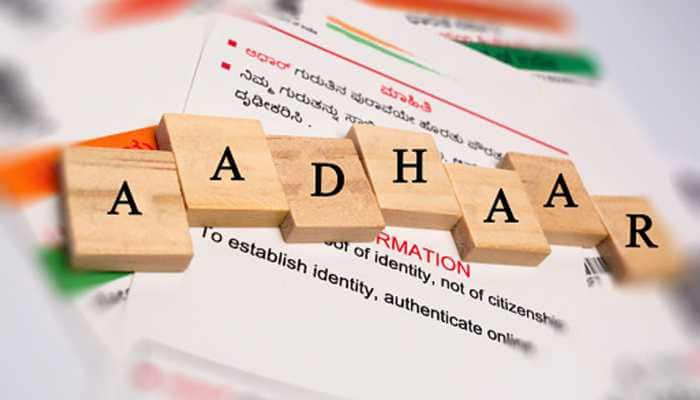Diwali 2020: Tithi, Lakshmi Puja muhurat and vidhi - All you need to know
On Diwali, Goddess Lakshmi and Lord Ganesha are worshipped. People, dressed in their traditional best, perform Lakshmi Puja.
- Diwali will be celebrated on November 14
- Devotees seek Goddess Lakshmi and Lord Ganesha blessings for wealth and prosperity
- People light up their homes and offices with lamps, earthen pots, decorative lights
Trending Photos
) Image used for representation only (Courtesy: Pixabay)
Image used for representation only (Courtesy: Pixabay) New Delhi: It's that time of the year again! It's Diwali time. The auspicious festival of Diwali or Deepawali is here. This year, it will be celebrated on November 14, Saturday. On Diwali, Goddess Lakshmi and Lord Ganesha are worshipped at every home and devotees seek their blessings for wealth and prosperity.
Diwali is one of the major festivals of India and is also celebrated across the world with much fervour. People light up their homes and offices with lamps, earthen pots, decorative lights and flowers, after all, Diwali is the festival of lights.
People, dressed in their traditional best, perform Lakshmi Puja in the evening and offer sweets and fruits as prasad.
Lakshmi Puja muhurat:
On November 14 - 05:28 pm to 07:24 pm (duration 1 hour 56 minutes)
Pradosh Kaal - 05:27 pm to 08:07 pm
Amavasya tithi - From November 14 at 02:17 pm and ends on November 15 at 10:36 am
Nishita Kaal muhurat
Lakshmi Puja muhurat - 11:58 pm (November 14) to 12:32 am (November 15)
Mahanishita Kaal - 11:39 pm to 12:32 am
Amavasya tithi - From November 14 at 02:17 pm and ends on November 15 at 10:36 am
(According to drikpanchang.com)
Lakshmi Puja vidhi:
Finalise a spot at your home where you would like to perform the Pujan. The Mandir area in your home can also be used for performing Lakshmi Pujan.
Clean the spot with Ganga Jal (water) or plain water. Put a piece of Yellow or red cloth on a wooden platform. Put a small Rangoli made of rice flour.
Respectfully place the idol or photo of Goddess Lakshmi on the platform. Put a handful of grains on the platform rather towards the right or left of the idol or photo.
The next step will be to prepare a 'Kalash'. Fill the 'Kalash' with water, one supari, a marigold flower, coin, and rice. You also need to keep five mango leaves, which will be used in the 'Kalash'. Place an uncut coconut with is fiber protruding upward in such a manner that the mango leaves remain partly inside and partially outside-facing upward.
The next step is to prepare a traditional 'puja ki thali', comprising rice grains, which will have to be placed in a heap (not too high). Then, with the help of turmeric powder (also known as 'Haldi'), draw a lotus flower over it. Once your drawing is completed, gracefully place your beautiful Lakshmi idol over it. As is known to all, goddess Lakshmi is our supreme source of livelihood, kindly place some coins before the idol (Maa will feel happy).
According to Hindu beliefs, Lord Ganesha is invoked before any god or goddess when performing a puja or Havan. Therefore, you will also have to place a Ganpati idol on the right side of the 'Kalash' (making sure that it is the South-West direction). As per rituals in our Hindu religion, welcome the lord with putting a Haldi-Kumkum tilak on the forehead. Offer some rice grains to the Ganpati idol.
Once the Lakshmi-Ganesha idols are strategically placed, you can also seek the blessings of the god and goddess by keeping your books, pen or any such personal belonging (you feel is related to your profession). With all this done, now is the time to light the lamp.
Light a special Diwali Diya, and place it on the 'puja ki thali'. Also, with it put some more rice grains kumkum and flowers. You will also have to remember to keep aside a glass of water that will be used during the puja. Now, as you proceed to perform the puja—start with putting a 'tilak' on the 'Kalash', also apply it on a glass of water which you kept it aside for puja. Offer some flowers also.
Now starts the process of invoking the goddess. If you know how to correctly chant the Vedic mantras of Lakshmi Maa—sing it, if you can't—worry not. Take some flowers and rice grains in your hand, close your eyes with full devotion bow your head down before the goddess and chant her holy name. Afterward, offer the flowers and rice in your hand to the goddess.
Once the goddess is invoked, take the Lakshmi idol and put in a plate, while bathing it with water. Put the 'Panchamrit', and clean the idol again with pure water. Now, carefully clean the idol, wipe out the water and place it on the 'Kalash'.
Now is your turn to apply Haldi-Kumkum tilak to the mother goddess, and yes don't forget the rice grains. Welcome the goddess with a freshly-made garland of flowers. You can also offer some marigold and Bel. To get that aromatic feel, light up some incense sticks before the goddess.
You will then have to please the goddess offering her some sweets, as it is the festival of wonderful mithais. Place the coconut in front of the goddess. You will also have to place the supari on a supari leaf—again beautifying it with some Haldi-Kumkum and rice grains. Also add some puffed rice, coriander seeds, and cumin seeds. What follows is, offering the Mother goddess your favourite Diwali mithai, fruits, money, or any precious jewellery item.
Lastly, the entire puja culminates with a Lakshmi Aarti, where everyone joins in the celebratory mood and prays to the Mother goddess together. With folded hands, we immerse ourselves before the goddess Lakshmi and in our honest askings —pray for prosperity and well-being.
Close your eyes, fold your hands and immerse yourself in the bhakti of Goddess Lakshmi and Lord Ganesha.
Here's wishing our readers a very happy Diwali!
Stay informed on all the latest news, real-time breaking news updates, and follow all the important headlines in india news and world News on Zee News.
Live Tv







)
)
)
)
)
)
)
)
)
)
